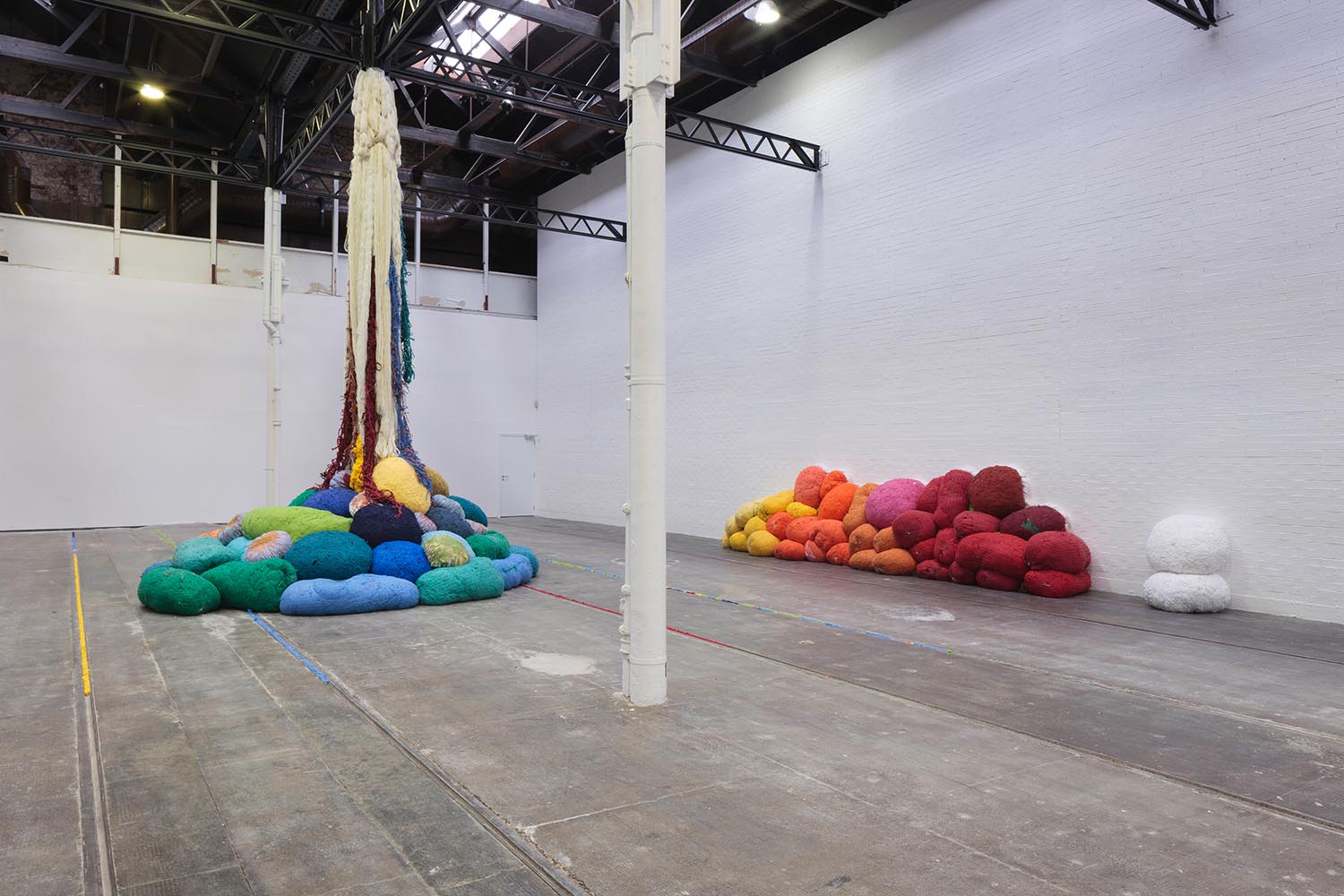


Sheila Hicks, Tramway, installation view at Glasgow International Festival, 2016. Photo: © Ruth Clark
Midweek, a small CAS delegation set out from London just as the sun was rising on one of the first warm days of a London spring, and headed north to see how much of Glasgow’s 7th International Festival we could hoover up in a single day. The opening events, performances and parties had spanned from Thursday to Sunday last, so Glasgow on Wednesday still had a faint air of morning-after-the-night-before – elegantly wasted under slate-grey skies.
This edition of the biennial festival is an exuberant affair that deftly brings together senior figures of the Glasgow scene with an international cast of artists from Europe and beyond. Less daunting in extent than Venice or other biennales, there is still a fair stretch of territory to negotiate and we began with a visit to Tramway, as a first stop on our way in from the airport.
Tramway’s two main spaces are dauntingly vast and can present a serious challenge in terms of exhibition making. Chicago-born Amie Siegel inhabits the theatre space with her film Provenance. In a superb, very large scale installation the work tracks furniture designed by Le Corbusier as it is appropriated from the Indian city of Chandigarh, restored and released into the market. Over in Tramway’s T2 space Sheila Hicks’ sculpture made from textiles and ravelled yarn slumps and soars and sets up dynamic juxtapositions with Alexandra Bircken’s new Trolley series of sculpture, which actually locates wheels into the tram tracks in the floor. A new digital animation by Lawrence Lek revolves around a childhood experience of seeing the QE2 launched from the Clyde shipyards. The stroke of genius in this exhibition was to invite Martin Boyce to create an architecture to articulate the space. At once self-effacing in its modest materials, Boyce’s interventions sympathetically bracket each artist’s contributions while creating a visual unity between them.
In a straight eight-hour stint we managed only to catch some of the highlights of the festival and I would recommend a two-day stay at least to do more justice to it. Honourable mentions must go to the pair of shows at Kelvin Hall. Upstairs is an outstanding new installation by Claire Barclay whose work just seems to go from strength to strength, while downstairs is a group of subtle and complex figurative paintings by Melbourne-based painter Helen Johnson. In spite of being one of the artists in Sadie Coles’ June: A Painting show last year, Johnson is relatively new to the European scene and there will be another chance to see her work in Basel in June. One to watch out for, people.
Mary Mary and The Common Guild have both chosen to show artists who are new to Glasgow. At Mary Mary there are new canvases by the Californian painter Emily Mae Smith, riffing on sources from Disney through Warhol with a goodly dose of West Coast colour sensibility. The Common Guild has as ever produced a poised and immaculate presentation of film and photographic work by the Lebanese artist Akram Zaatari. Personal, tender and sometimes humorous, this very precisely curated exhibition is a real treasure.
The Modern Institute are showing across both their spaces, with a Monika Sosnowska piece paired with major recent works by Martin Boyce and Jim Lambiein one space, and a wonderful new installation by Glasgow stalwarts Joanne Tatham and Tom O’Sullivan in the other. We finished up our day at GoMA, whereCosima Von Bonin’s installation Who’s Exploiting Who in the Deep Sea peoples the downstairs gallery with a multi-coloured cast of strange and wonderful hybrid creatures. In the upper galleries Tessa Lynch has created what she describes as an “architectural drama”: a collection of new sculptural works which loosely mimic the objects, scenarios and histories found on her daily commute.
There is a great deal to enjoy in this latest, substantial edition of the festival, making it well worth the trip north to remind ourselves, as if it were necessary, why Glasgow is such an important international centre for visual art.
Caroline Douglas
Director
Glasgow International, various venues, Glasgow. For general enquiries contact +44 (0)141 276 8384 or visit Trongate 103, Glasgow, G1 5HD. The Festival continues until 25 April 2016. glasgowinternational.org